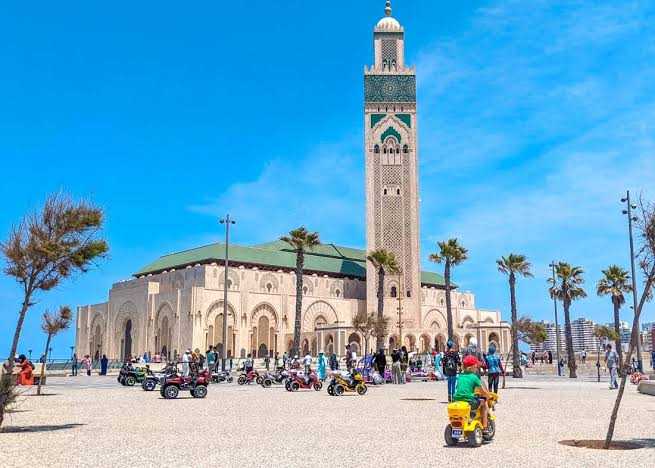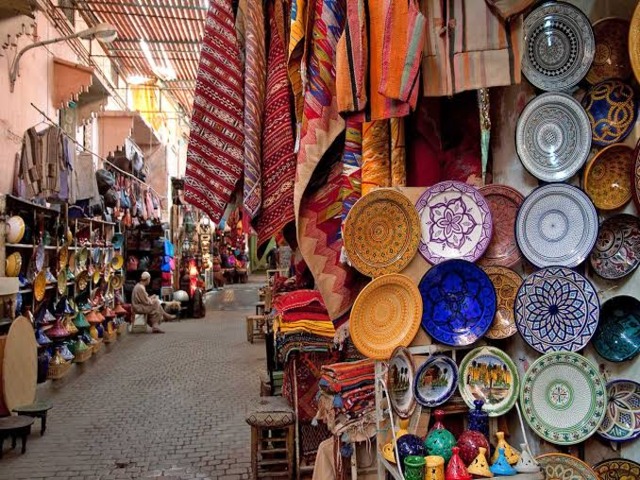Call Anytime

Blog Details

Marrakesh and it’s french culture
Marrakesh is a city in the country of Morocco. It is home to pretty palaces, mosques and gardens. Morocco along with Algeria, Tunisia and some other countries belong to a region/Union called as “Maghreb” in Africa. The name comes from the Arabic “Al-Maghrib” which means “the West” in Arabic. In European history this region is namely called as the Barbary Coast and the people are called as Berbers and Moors. In 1912, the French government annexed the majority of the kingdom of Morocco. This helped the amalgamation of the French culture with the Moroccan culture. Marrakesh developed a strong link with the French language. The sign boards are all in French and Arabic and many individuals speak both French and Arabic fluently. Indeed, the Moroccan dialect of Arabic has been said to be a fine blend / mélange of Arabic, French and Spanish language as that was also responsible for Morocco’s rich heritage. Many areas in Marrakesh have influences from the French architecture with large boulevards, French style cafés, restaurants and bars. The colonial buildings have retained the colonial aesthetic in order to attract tourists. Although Morocco became independent in 1956, the cultural heritage of French colonial rule is very evident in the language, the culture, the music, the cuisine etc. The famous singer Khaled who sang the famous, hitsong “Didi Didi” is from Maghreb and he sings many French and Arabic songs.
Expats from the French influenced Morocco, Tunisia and Algeria are the largest immigrant group in France. Many of them have started restaurants in Paris. Couscous is a traditional Maghrebi dish but it is also one of the most widely consumed foods in France and an essential part of Parisian cuisine. Couscous is a pretty simple dish made with granules of semolina flour, meat or fish, vegetables and spices. When steamed the grain expands and becomes fluffy with a texture similar to rice.
A tagine/tajine is a traditional Moroccan cooking vessel made of ceramic or unglazed clay with a round base and low sides. A cone shaped lid sits on the base of the vessel during cooking. The conical lid traps steam during cooking and returns the liquid back to the clay pot resulting in a moist dish with concentrated flavors. Common herbs and spices used in Moroccan cuisine are cinnamon, cumin, turmeric, ginger, paprika, coriander, saffron, mace, cloves, fennel, anise, nutmeg, cayenne pepper, fenugreek, caraway, sesame seeds and black pepper. These and some more are used in making the famous spice blend from North Africa called “Ras el Hanout”. The blend is full of warm spices but it gives a sweet andmild flavor. “Harissa” is a type of a hot chili pepper paste made in olive oil and also sometimes rose petals are added to it.
The Maghrebi tea – “Shai/Chai al - Maghrebi” also known as the Moroccan Mint tea is a green tea prepared with spearmint leaves and lots of sugar. It is poured from the traditional Arabic teapot into the beautiful, colorful glasses from high above to swirl the tea and to aerate it for the strong flavor. The French people love coming to Morocco during their vacations and they specially love living in “Marrakech”. “Marrakech” written with the “ch” at the end is the French way of writing it as “sh” sound is written as “ch” in French! The Moroccan Mint tea is very popular among the French people. The French love sipping the Moroccan Mint tea and you will find many cafés in France that serve the traditional Moroccan Mint tea exactly like the way how the traditional Irani tea is served and is very popular in India among Indians!
So, plan your next travel destination as Morocco and fall in love with the country because it is the perfect, exotic blend – of the Arabic and French cultures.
P.S – If you are a tea lover like me, then you have to try out the Moroccan Mint tea. You will get the recipe easily online. (Don’t forget to read my blogs on cultures on the blog page the next time you sip your Chai!)


